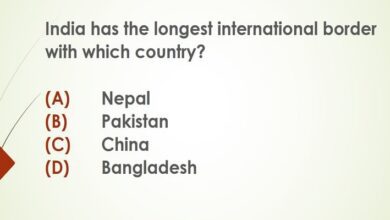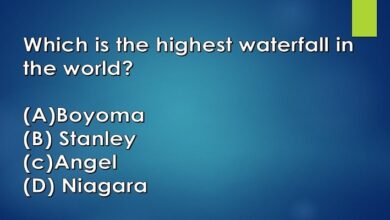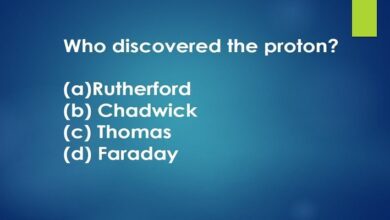GK Questions & Answers on Indian History in English | PDF
Ancient MCQ GK Questions & Answers on Indian History
Ancient MCQ GK Questions & Answers on Indian History in English (Download PDF) – The history of ancient India is very extensive. It is impossible to describe all the incidents, but some such questions are often asked by all government and non-government institutions in the examination. We have given below 50 + such questions which will increase the knowledge of a student.
Ancient MCQ GK Questions & Answers on Indian History
- The names of which two Indians associated with the discovery of the Indus Valley Civilization?
(1) Dayaram Sahni and Rakhaldas Banerjee (2) John Marshall and Ishwariya Prasad (3) Ashirwadi Lal Srivastava and Ranganatha Rao (4) Madhuswaroop Vats and Vidhi Rao
Ans. Dayaram Sahni and Rakhaldas Banerjee
- Rangpur where the contemporary Harappan civilization was located is-
(1) Punjab (2) Uttar Pradesh (3) Saurashtra (4) Rajasthan
Ans. in Saurashtra
- Who was in charge of the archaeological excavations of Harappa and Mohenjodaro?
(1) Sir John Marshall (2) Colonel Todd (3) Lai Macaulay (4) Lai Clive
Ans. Sir John Marshall
- The figure of which of the following animal found on the seal shows that there were trade relations between the Indus Valley Mesopotamian civilizations?
(1) Horse (2) Donkey (3) Bull (4) Elephant
Ans. Bull
- People of Indus Valley believed in –
(1) In the soul and the Brahman (2) in the Yagya system (3) in the mother power (4) in the rituals
Ans. In the mother power
- Which one of the following Indus sites was not located on the sea coast?
(1) Surkotda (2) Lothal (3) Walakot (4) Kotdiji
Ans. Kotdiji
- Which of the following is considered to be the largest building of Mohenjodaro?
(1) Vishal Annanagar \Dhanayakothar (2) Sabha building (3) None of these (4) Pillar building
Ans. Vishal Annanagar\Dhanayakothar
- What was the method adopted by the Harappans for the arrangement of houses in the cities?
(1) In the shape of lotus flower (2) In circular shape (3) In grid pattern (4) In triangular shape
Ans. in grid system
- Which one of the following animals not properly marked in the seals and terracotta artefacts found in the Harappan Civilization?
(1) Lion (2) Elephant (3) Rhinoceros (4) Tiger
Ans. Lion
- With which metal were the Harappans not familiar?
(1) Gold and Silver (2) Copper and Bronze (3) Three and three (4) Iron
Ans. Iron
- Which place of Indus civilization is located in India?
(1) Harappa (2) Mohenjodaro (3) Lothal (4) None of these
Ans. Lothal
- The earliest old city discovered in India was?
(1) Harappa (2) Punjab (3) Mohenjodaro (4) Sindh
Ans. Harappa
- The earliest evidence of silver availability in India is found in?
(1) In Harappan culture (2) In Chalcolithic culture of Western India (3) In Vedic Samhita (4) In silver coins
Ans. In Harappan culture
- Which statement about the Indus Civilization is false?
(1) There was a system of drains in the cities (2) Trade and commerce were in condition (3) Matadevi was worshipped (4) People were familiar with iron
Ans. People were familiar with iron
- Manda was situated on the bank of which river?
(1) Chenab (2) Sutlej (3) Ravi (4) Sindhu
Ans. Chenab
- The Harappan site Ropar/Punjab situated on the bank of which river?
(1) Chenab (2) Sutlej (3) Ravi (4) Sindhu
Ans. Sutlej
- An advanced water management system is discovered in Harappa?
(1) Dholavira (2) Lothal (3) Kalibanga (4) Alamgirpur
Ans. In Dholavira
- What color was similar to the Harappan pottery?
(1) Red (2) Green (3) Pandu (4) Blue
Ans. Red
- In which of the following era does the Indus civilization fall?
(1) Historical period (2) Prehistoric period (3) Post prehistoric period (4) Half historical period
Ans. half historical period
- In which of the following places in the developed system of Indus Valley Civilization, remains of religions are found?
(1) Harappa (2) Kalibanga (3) Lothal (4) Mohenjodaro
Ans. Mohenjodaro
- From where is the evidence of plowed field under the Harappan civilization found?
(1) Ropar (2) Lothal (3) Kalibanga (3) Anavali
Ans. Kalibanga
- From which place the decoration of bricks of Sendhav civilization has been found?
(1) Kalibanga (2) Chanhudro (4) Mohenjodaro (4) Banawali
Ans. Kalibanga
- Where is Mohenjodaro located?
(1) Punjab (2) Sindh (3) Gujarat (4) Uttar Pradesh
Ans. Sindh
- A large bathhouse has been found in the Indus Civilization?
(1) Mohenjodaro (2) Harappa (3) Lothal (4) Kalibanga
Ans. in Mohenjodaro
- In the currency of Indus Civilization, which god’s incomparable picture of Rama is found?
(1) Half Shiva (2) Half Brahma (3) Half Vishnu (4) Half Indra
Ans. Half shiva
- Which of the following Harappan sites was in Gujarat?
(1) Kalibanga (2) Ropar (3) Banawali (4) Lothal
Ans. Lothal
- Mohenjodaro is also known by which one other name?
(1) Mound of the living (2) Mound of skeletons (3) Mound of corpses (4) Mound of dead
Ans. Mound of the dead
- What is the popular name of Harappan Civilization?
(1) Indus Civilization (2) Lothal Civilization (3) Indus Valley Civilization (4) Mohenjodaro Civilization
Ans. Indus Valley Civilization
- Which one of the following animals has been most engraved on the seals obtained from the excavations of the Sandhav places?
(1) Horse (2) Elephant (3) Bull (4) Lion
Ans. Bull
- What is the Indus Valley Civilization known for?
(1) for his town planning (2) for Mohenjodaro and Harappa (3) for his agricultural works (4) for his industries.
Ans. for your town planning
- Who among the following scholars was the first discoverer of Harappan Civilization?
(1) Sir John Marshall (2) R. D. Banerjee (3) A. Cunningham (4) Dayaram Sahni
Ans. Dayaram Sawhney
- Which was the port of Indus Civilization?
(1) Kalibanga (2) Lothal (3) Planting (4) Mohenjodaro
Ans. Lothal
- The discovery of the scale proved that the people of the Indus Valley were familiar with measurement and weight. Where did this discovery happen?
(1) Kalibanga (2) Harappa (3) Chowdhury (4) Lothal
Ans. Lothal
- Into which classes was the Harappan society divided?
(1) Hunter priests, farmers and Kshatriyas, (2) Scholar warriors, merchants and laborers (3) Brahmins, Kshatriyas, Vaishyas and Shudras, (4) king priests, soldiers and Shudra
Ans. Scholar warrior merchant and laborer
- What is the most appropriate name of Indus Civilization?
(1) Harappan Civilization (2) Indus Civilization (3) Indus Valley Civilization (4) None of these
Ans. Harappan Civilization
- In which year was the Harappan Civilization discovered?
(1) 1935 (2) 1920 (3) 1925 (4) 1921
Ans. 1921
- Which statement about Harappan Civilization is correct?
(1) He was aware of Ashwamedha (2) Cow was sacred to him (3) He started respecting Pashupati (4) His culture was not equal
Ans. He started respecting Pashupati
- What was the social pattern of the Harappan people?
(1) Fair Egalitarian (2) Slave Labor Based (3) Forest Based (4) Caste Based
Ans. Fair egalitarian
- Which site of the Harappan Civilization was called the Oasis of Sindh?
(1) Mohenjodaro (2) Kalibanga (3) Lothal (4) Harappa
Ans. Mohenjodaro
- What was the size of the entire area of Harappan Civilization?
(1) Square (2) rectangular (3) triangular (4) circular
Ans. Triangular
- The most recognized period of Harappan Civilization is?
(1) 2500 BC- 3000 BC (2) 2500 BC-1750 BC (3) 3500 BC-1800 BC (4) Cannot be certain
Ans. 2500 BC-1750 BC
- The Indus Valley Civilization was not a contemporary of which of the following civilizations?
(1) Egyptian Civilization (2) Mesopotamian Civilization (3) Chinese Civilization (4) Greek Civilization
Ans. Greek civilization
- How far was the Indus Valley Civilization extended?
(1) Punjab Delhi and Jammu and Kashmir (2) Rajasthan Bihar Bengal and Orissa (3) Punjab Rajasthan Gujarat (4) Punjab Rajasthan Gujarat Uttar Pradesh Haryana Sindh and Balochistan
Ans. Punjab Rajasthan Gujarat Uttar Pradesh Haryana Sindh and Balochistan
- Where were the remains of a horse found in the Indus Valley Civilization?
(1) Surkotada (2) Banawali (3) Manda (4) Rakhigarhi
Ans. Surkotada
- In which state is the Indus Valley site Kalibanga?
(1) Rajasthan (2) Gujarat (3) Madhya Pradesh (4) Uttar Pradesh
Ans. In Rajasthan - Which one of the following materials was used as the manufacture of coins of the Harappan period?
(1) steel (2) copper (3) iron (4) bronze
Ans. Steel
- Harappan Civilization belonged to which era?
(1) Bronze Age (2) Neolithic Age (3) Palaeolithic Age (4) Iron Age
Ans. Bronze Age
- What was the main occupation of the people of Indus Valley Civilization?
(1) Trade (2) Animal Husbandry (3) Hunting (4) Agriculture
Ans. Agriculture
- The inhabitants of the Harappan Civilization were?
(1) Rural (2) Urban (3) Nomadic (4) Tribal
Ans. Urban
- From what were the houses of the Indus civilization built?
(1) Brick (2) Bamboo (3) Stone (4) Wood
Ans. From brick
- The Harappans were the first to produce which item?
(1) Currency (2) Bronze tools (3) Cotton (4) Barley
Ans. Cotton
Download PDF – Click Here
Read also –




